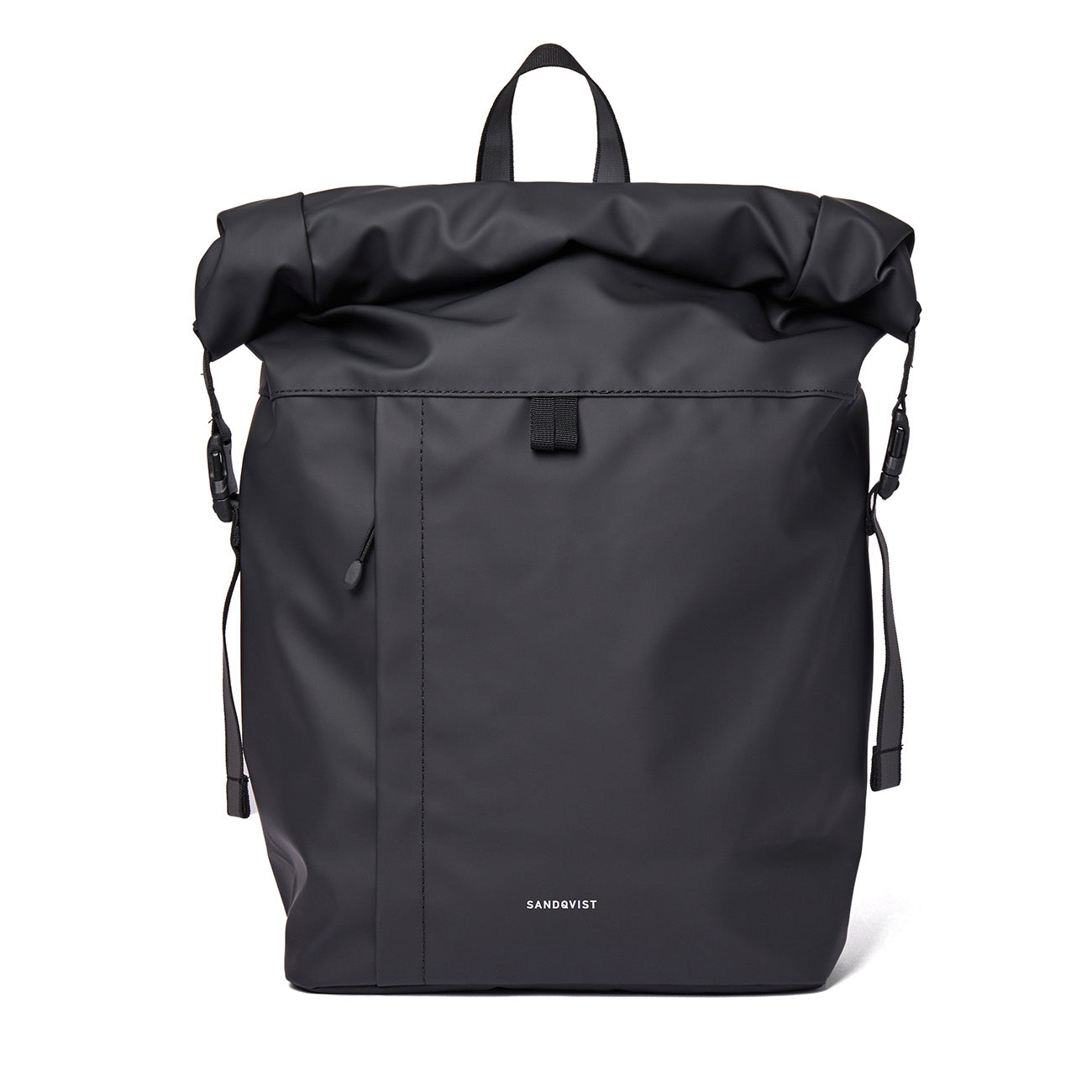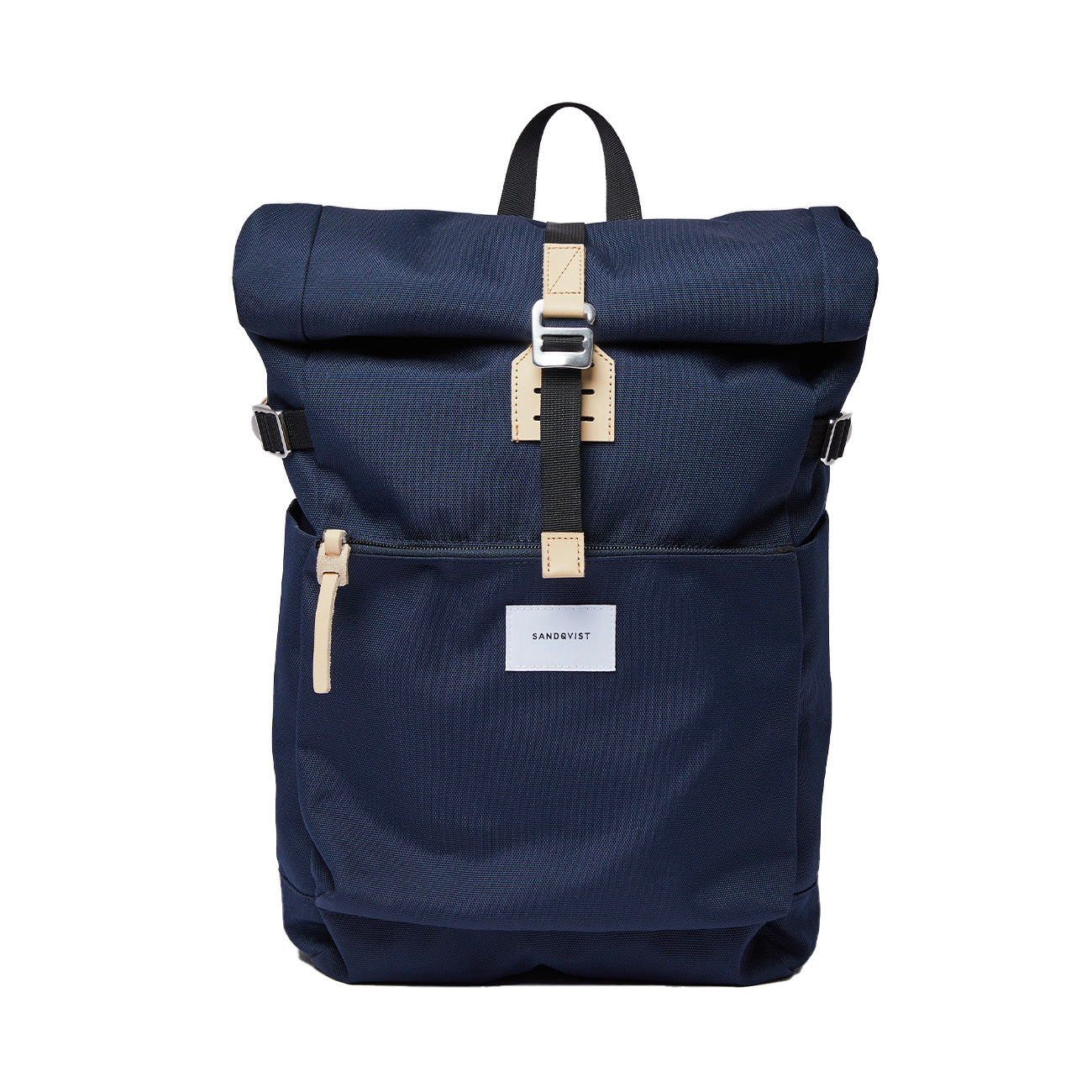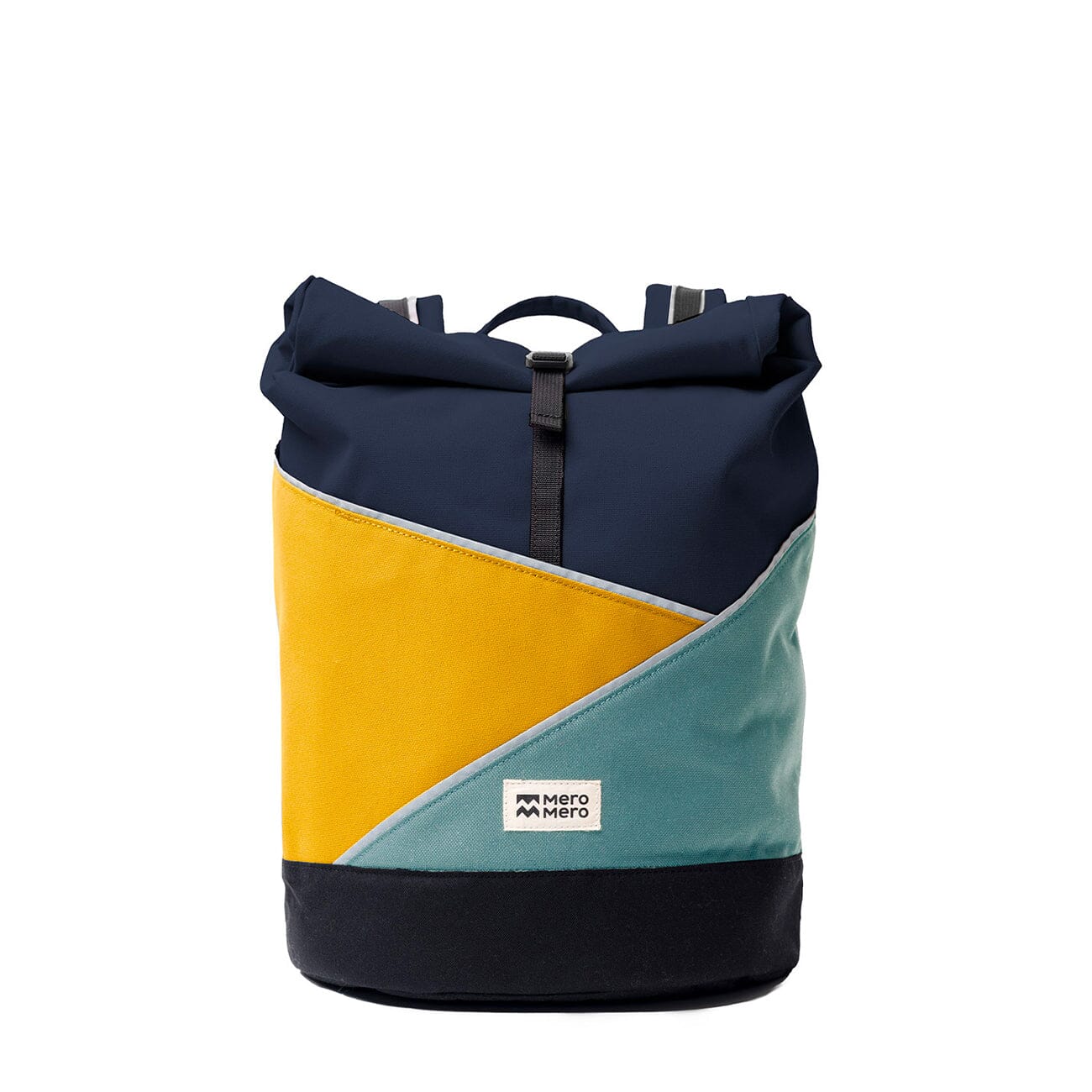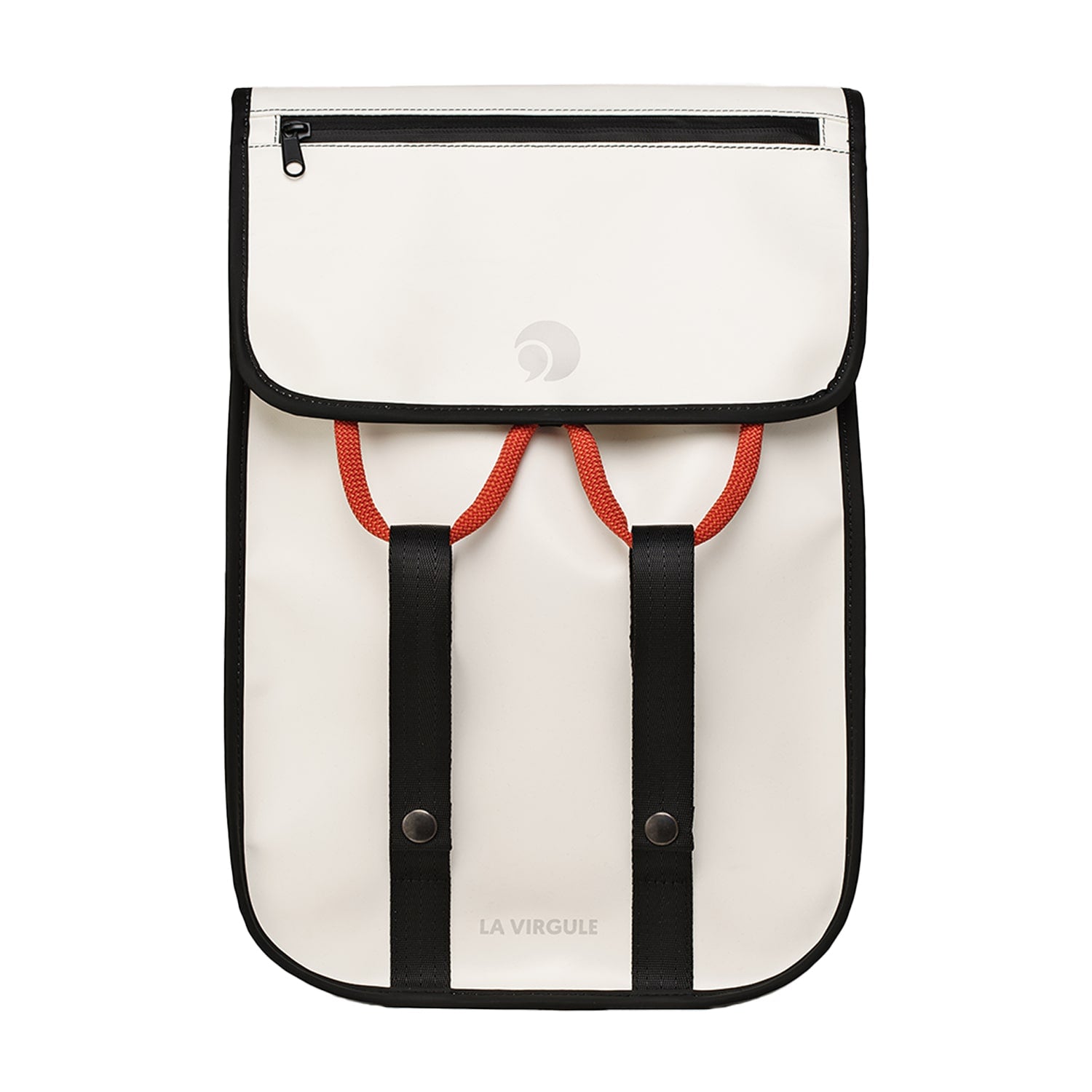
What Is Recycled Polyester ? A Journey From Bottle to Fabric
Reading Time: about
When I first stumbled upon the term 'recycled polyester', I was sipping coffee, scrolling through my news feed, and frankly, quite skeptical. I mean, how could something associated with plastic bottles transform into the cozy fleece I wear on my weekend hikes? But, as I delved deeper, the story of recycled polyester, often called rPet, unfolded like an intriguing novel, one where innovation meets sustainability.
You see, recycled polyester is not just a trend; it's a response to a global crisis. Our planet, lovely as it is, has a bit of a polyester problem. Polyester, a synthetic fabric derived from petroleum, is a mainstay in our wardrobes, and why not? It's durable, versatile, and wrinkle-resistant. But here's the twist – it's also a major environmental villain. The production of virgin polyester gulps down energy and spews out CO2, contributing to our ever-growing carbon footprint.
Now, let's talk about rPet. Imagine giving a second life to the plastic bottle that once quenched your thirst. That's rPet for you – it's recycled polyester crafted from post-consumer plastic bottles and industrial waste. It's like turning trash into treasure, or in this case, into that trendy jacket you've been eyeing.
"But hold on," I hear you say, "is recycled polyester actually making a dent in the environmental impact?" Great question! The answer is a resounding 'Yes, but...' You see, while rPet significantly reduces the reliance on virgin resources and cuts down on energy usage and CO2 emissions, it's not a silver bullet. It's still non-biodegradable and has its own set of challenges, like the pesky issue of microplastic pollution.
So, why am I sharing all this with you? Well, because I believe in making informed choices, especially when it comes to what we wear. As we stand at this crossroads, where fashion meets sustainability, it's crucial to understand the fabric of our choices, quite literally. Recycled polyester is not just a fabric; it's a statement, a choice that echoes our commitment to the planet.
Stay tuned as we unravel the layers of recycled polyester, from its glittering benefits to the gritty challenges. Together, let's weave through the facts, debunk the myths, and maybe, just maybe, find that perfect blend of style, comfort, and sustainability. Ready to embark on this journey? Let's dive in!
Summary
- 1. From Source to Fabric - The Lifecycle of Recycled Polyester
- 2. Environmental Impacts: A Balancing Act
- 3. Benefits of Recycled Polyester in Outdoor Apparel
- 4. Challenges and Limitations of Recycled Polyester: Navigating the Bumps on the Road to Sustainability
- 5. Implementing Recycled Polyester in Outdoor Gear: Lessons from the Trailblazers
- 6. Promoting Sustainability in the Textile Industry: A Shared Responsibility
- 7. Frequently Asked Questions
I. From Source to Fabric - The Lifecycle of Recycled Polyester
Understanding the intricate journey of recycled polyester (rPet) requires delving into its origins, the meticulous recycling process, and the methodologies employed to transform waste into wearable fabrics. Let's unravel this complex process, examining both the pre-recycling phase and the two predominant recycling methods: mechanical and chemical recycling.
1. The Genesis: Sourcing the Raw Materials
The lifecycle of recycled polyester begins long before it's spun into the cozy fleece jacket in your wardrobe. It starts with the collection of raw materials, predominantly PET bottles and polyester-based industrial waste.
These materials are the remnants of our daily consumption—water bottles, packaging, and industrial by-products—destined for landfills or, worse, the oceans.
Instead, they embark on a journey of transformation, collected and sorted meticulously to ensure the purity of the raw material. The goal is clear: rescue and repurpose these materials, giving them a new lease on life as part of your next garment.
2. Mechanical Recycling: The Physical Transformation
Mechanical recycling is the more established form of recycling polyester. Here's how it unfolds:
-
Sorting and Cleaning: The collected PET bottles and polyester waste are sorted based on color and type. Following this, they undergo thorough cleaning to remove any contaminants, labels, or caps.
-
Shredding: The clean PET is then shredded into small flakes. These flakes are further processed to eliminate any remaining impurities, ensuring the quality of the recycled material.
-
Melting and Spinning: The purified flakes are melted and extruded through a spinneret to form fibers. These fibers are then stretched, crimped, and baled, ready to be spun into yarn. Mechanical recycling doesn't alter the basic polymer structure, meaning the physical properties of the recycled polyester closely mirror those of its virgin counterpart.
Mechanical recycling is praised for its energy efficiency and lower carbon footprint. However, it's not without limitations. The quality of mechanically recycled polyester can degrade with each cycle, limiting the number of times a material can be recycled.
3. Chemical Recycling: A Molecular Makeover
Chemical recycling, though less common, represents a frontier in sustainable fabric innovation. This process breaks down polyester to its basic chemical components, which can then be reassembled into polyester fiber, offering a potentially endless recycling loop. Here's a closer look:
-
Chemical Treatment: The polyester waste is broken down using chemicals, stripping away dyes, additives, and other contaminants, and reducing the material to its basic monomers or oligomers.
-
Purification: The resultant chemicals are rigorously purified, setting the stage for the creation of high-quality polyester without the degradation in quality often associated with mechanical recycling.
-
Polymerization: The purified monomers/oligomers are polymerized, reforming them into polyester. This newly formed polyester is indistinguishable from virgin polyester, offering the same strength, durability, and versatility.
Chemical recycling holds the promise of a true closed-loop recycling system. However, it's not without challenges. The process is currently more costly and energy-intensive than mechanical recycling, and it requires sophisticated technology and infrastructure.
📷 Credit: Waste & Recycling Middle East and Africa's Youtube Channel
II. Environmental Impacts: A Balancing Act
When we peel back the layers of recycled polyester's environmental footprint, the picture becomes a tapestry of gains and challenges. Let's dive into the numbers and narratives that shape this complex story.
1. Energy Consumption and CO2 Emissions: The Lesser of Two Evils?
Recycled polyester, often hailed as the greener choice, indeed shines in its ability to conserve resources. Studies suggest that manufacturing rPET fabric can
- reduce energy consumption by up to 45% compared to virgin polyester
- cut down CO2 emissions by nearly 30-50% compared to its virgin counterpart.
These figures aren't just digits; they're a testament to rPet's role in curbing our carbon narrative.
However, this isn't a ticket to complacency. The production of rPET still involves energy—albeit significantly less—and every stage of the lifecycle, from transportation to processing, adds to its carbon footprint. It's a step in the right direction, but it's part of a longer journey towards truly sustainable practices.
2. The Twist in the Tale: Non-Biodegradability and Microfiber Pollution
Now, for the part of the story that often stays in the shadows. Recycled polyester, despite its green accolades, grapples with the issue of longevity—both a boon and a bane. Its durability means it doesn't break down easily, leading to the challenge of non-biodegradability. When rPET products finally reach the end of their useful life, they don't return to the earth as benign elements. Instead, they linger, often in landfills or, worse, as litter in natural environments.
Then there's the microscopic menace of microfiber pollution. Every laundry cycle can release hundreds of thousands of tiny synthetic fibers from our clothes. These microfibers are too small for wastewater treatment plants to catch, so they end up in rivers, oceans, and even in the food chain.
The impact of these microplastics is profound, affecting marine life and, potentially, human health. It's a global issue, and while solutions like microfiber filters and innovative washing bags are emerging, the real fix requires systemic change in how we produce and consume our textiles.
III. Benefits of Recycled Polyester in Outdoor Apparel
1. Durability and Quality: Busting the Myths
Let's tackle a common myth head-on: "Recycled materials mean compromised quality." I'll be frank – I had my doubts too. But here's the truth: rPet doesn't just match the strength and durability of its virgin counterpart; it often surpasses it.
The technology behind recycling has evolved tremendously, ensuring that rPet fabrics withstand the wear and tear of outdoor adventures. So, whether you're scaling a mountain or setting up camp, rest assured, your rPet gear won't let you down.
2. Performance and Comfort: Tailored for the Great Outdoors
Now, performance and comfort are non-negotiables when it comes to outdoor apparel, right? Recycled polyester steps up to the plate here as well. Its moisture-wicking properties keep you dry, while its breathability ensures you stay comfortable, no matter the weather.
From blistering heat to bone-chilling cold, rPet adapts, making it a go-to choice for outdoor enthusiasts. And the best part? It feels just as cozy as it is robust – because who said you can't have the best of both worlds?
3. Sustainability and Ethical Considerations: Beyond the Fabric
We've talked about the environmental perks of choosing rPet, like the reduced reliance on petroleum and natural gas. But the benefits ripple beyond just the fabric. By opting for rPet, you're supporting a market that values ethical labor practices and fair working conditions. It's not just about wearing a piece of clothing; it's about wearing your values.
Choosing rPet means you're part of a movement that advocates for a cleaner, fairer, and more sustainable future. So, next time you zip up that rPet jacket, know that it's not just sheltering you from the storm – it's making a statement, loud and clear.
4. Challenges and Limitations of Recycled Polyester: Navigating the Bumps on the Road to Sustainability
As we venture deeper into the world of recycled polyester, it's crucial to navigate the winding paths with our eyes wide open. Much like that challenging hiking trail that promises breathtaking views at the summit, the journey with rPet is filled with its own set of obstacles. Let's lace up our boots and tackle these challenges head-on, shall we?
1. Quality and Technological Issues: A Patchwork of Solutions
First on our trail is the intricate maze of quality and technological issues. Imagine trying to stitch together a quilt with different fabric pieces, each with its own texture and color. That's akin to recycling mixed-material garments. The blend of various fibers makes it a tough nut to crack, leading to a potpourri of quality in the end product. And then there's the color consistency issue. Just like trying to get that perfect shade in your grandma's secret pie recipe, achieving uniform color in rPet is quite the art, often necessitating the addition of virgin materials to even out the hues.
2. Market and Economic Factors: Cultivating a Conscious Consumer Base
Next up, we face the steep climb of market and economic factors. Here's the deal – while many of us love the idea of sustainable fashion, our shopping habits haven't fully caught up yet. It's like knowing the benefits of a healthy diet but still reaching for that tempting chocolate cake. The market for recycled polyester is budding, but it's craving more – more awareness, more education, and more love from consumers. It's about transforming 'I'll think about it' into 'I'll take it!'
📷 Credit: AYA's Youtube Channel
3. Environmental Concerns: Microplastic Pollution – The Unseen Culprit
Now, let's tread softly as we approach a rather slippery slope – microplastic pollution. Picture this: every time we wash our beloved rPet garments, they shed tiny plastic fibers, invisible to the naked eye but a giant threat to our aquatic buddies. These microplastics embark on a voyage through our drains and into the oceans, gatecrashing the marine life's party and causing quite the havoc.
So, where do we go from here? Do we turn back, or do we press on, armed with our compass of knowledge and a map of determination? I say, we forge ahead! Yes, the path is sprinkled with challenges, but it's also lined with opportunities. Opportunities to innovate, to educate, and to make choices that resonate with the harmony of our environment.
Every challenge is a call to action, an invitation to be part of the solution. Whether it's advocating for advanced recycling technologies, making informed purchases, or joining the fight against microplastic pollution, your choices have the power to weave a greener narrative.
V. Implementing Recycled Polyester in Outdoor Gear: Lessons from the Trailblazers
As an outdoor enthusiast and a curious observer of the apparel industry, I've watched brands grapple with the balance between performance and sustainability. And let me tell you, the journey of Patagonia in adopting recycled polyester is nothing short of inspirational. It's a tale that deserves its own campfire.
1. Patagonia: Pioneering Sustainability Since 1993
Picture this: It's 1993, and while most of us were jamming to the latest chart-toppers, Patagonia was busy revolutionizing the outdoor apparel industry. They took a gamble on recycled polyester, turning discarded soda bottles into fleeces. Yes, you heard it right – your favorite fizzy drink had a second act as a cozy jacket.
But Patagonia's commitment didn't stop at a one-hit-wonder. They've been relentless, pushing the boundaries of innovation and ethics. Today, they use recycled polyester extensively, not just in fleeces but in a wide array of products, significantly reducing their carbon footprint. It's like they've knit sustainability into their very fabric.
Now, you might be wondering, "That's all well and good, but what does the future hold?" The outdoor apparel industry is buzzing with potential. Brands are not just jumping on the sustainability bandwagon; they're steering it. From high-performance gear to everyday wear, recycled polyester is becoming the new norm, a testament to the industry's commitment to our planet's future.
2. Consumer Perspective: Navigating the World of rPet
Let's switch gears and talk about you, the savvy consumer. Choosing recycled polyester is like picking the ripest fruit in the market – it requires a discerning eye. So, how do you spot high-quality rPet products amidst the sea of choices? Here's your compass:
- Check the Labels: Like reading the ingredients on your cereal box, check the product labels. Look for terms like 'recycled polyester', 'rPet', or specific certifications that guarantee a certain percentage of recycled content.
- Quality Over Quantity: Remember, not all recycled polyester is created equal. Feel the fabric, research the brand's sustainability claims, and invest in pieces that promise durability and performance.
- Transparency is Key: In the digital age, information is at your fingertips. Brands that are proud of their sustainability journey will shout it from the mountaintops. Visit their websites, read their sustainability reports, and engage with their stories.
In this symphony of sustainability, every choice resonates. Whether you're scaling a mountain or just enjoying a quiet walk in the park, choosing recycled polyester is more than a fashion statement; it's a pledge to tread lightly on this beautiful planet we call home.
As we stand at the intersection of innovation and tradition, let's take a moment to appreciate the journey of recycled polyester. It's a narrative woven with perseverance, innovation, and a vision for a greener tomorrow.
📷 Credit: NowThis Earth's Youtube Channel
VI. Promoting Sustainability in the Textile Industry: A Shared Responsibility
In the grand tapestry of our world, every thread counts, and in the realm of sustainable fashion, businesses and consumers alike play pivotal roles. It's like a dance, really, where each step, each decision, weaves into the larger pattern of our environmental footprint.
1. The Role of Businesses: Pioneers of Change
Let's first turn the spotlight on businesses. Imagine a world where every brand you adore not only makes you look good but also does good for the planet. This isn't a far-fetched dream. It's the power of sustainable practices in the textile industry.
Businesses, big and small, are waking up to the call of sustainability. They're swapping traditional methods for greener alternatives, like water recycling plants or solar-powered factories. But it's not just about what happens behind the factory doors. It's about transparency, about letting you peek behind the curtain to see the magic, or sometimes, the mayhem.
And then, there are certifications. Think of them as golden stars on your school homework. Certifications like GRS (Global Recycle Standard) or OEKO-TEX are not just fancy acronyms. They're reassurances, promises that the fabric swaying on the rack has a story you'd want to be part of, a story of ethical sourcing, mindful manufacturing, and a journey that respects our planet.
2. The Role of Consumers: The Power in Your Hands
Now, let's chat about you and me, the consumers. Every time we shop, we cast a vote for the world we want. And it's high time we made those votes count. You see, being a consumer in this age is like being a detective. It's about peering through the labels, understanding the impact of our choices, and sometimes, making tough decisions.
Consumer advocacy is the buzzword, but it's more than just a trend. It's about raising our voices, questioning brands, and demanding transparency. It's about creating a ripple, a movement that nudges businesses towards sustainability, not because it's fashionable, but because it's the right thing to do.
Making informed decisions can feel daunting, I know. But it's also empowering. It's about embracing the power of knowledge, about understanding the journey of that recycled polyester jacket from a discarded bottle to your wardrobe. And with each choice, with each purchase, you're not just buying a product. You're shaping the future, one thread, one fabric, one garment at a time.
Conclusion
As we come to the end of our journey through the intricate world of recycled polyester, it's clear that rPet isn't just a fabric – it's a narrative of our times, a testament to innovation, and a beacon for sustainable fashion. From the bustling factory floors to the quiet aisles of our favorite stores, the story of recycled polyester is unfolding, thread by thread, choice by choice.
As businesses embrace more sustainable practices and as we, the consumers, become more conscious of our choices, we're not just wearing clothes. We're donning stories, stories of resilience, care, and hope. Recycled polyester, with its blend of challenges and triumphs, reminds us that every step counts, that every decision is a stitch in the fabric of our future.
So, as we part ways, remember that the journey to sustainability isn't a solo trek. It's a shared path, a collective endeavor. It's about businesses innovating, consumers questioning, and together, crafting a world where fashion is not just chic, but also kind – kind to people, kind to our planet.
FAQ
1. How does the recycling process for polyester differ from other materials?
Unlike organic materials, polyester recycling is a high-tech ballet of chemistry and engineering. It involves breaking down PET bottles and garments into their core components and re-spinning them into new polyester fiber. While other materials might biodegrade or be downcycled, recycled polyester offers a closed-loop solution, turning potential waste into wearable wonders.
2. What are the main environmental benefits and drawbacks of recycled polyester?
The benefits are clear: reduced dependence on virgin resources, lower energy consumption, and less CO2 emissions. However, it's not all rosy. Recycled polyester still grapples with issues like microplastic pollution and the complexities of recycling mixed-fiber garments.
3. How does rPET impact microplastic pollution?
rPET, like its virgin counterpart, can shed microplastics, especially during laundry. These tiny fibers can end up in our oceans, posing a risk to marine life. It's a challenge that the industry is earnestly working to solve, pushing us to rethink how we care for our clothes.
4. How can consumers differentiate between high-quality rPET and lower-quality options?
Look for certifications like GRS or OEKO-TEX, which ensure that the recycled polyester meets stringent environmental and social standards. High-quality rPET is also often accompanied by transparency in sourcing and manufacturing processes.
5. What future developments are expected in the field of recycled polyester?
Innovation is buzzing, with advancements in chemical recycling promising to elevate the purity and quality of rPET. There's also a growing emphasis on creating a circular economy, where recycled polyester can be endlessly recycled without degrading in quality.
6. How does the use of rPET reduce our dependence on petroleum and natural gas?
rPET diverts plastic waste from landfills and oceans, repurposing it into fabric. This means we're not just reducing plastic pollution but also cutting back on the need for fossil fuels used in producing virgin polyester.
7. In what ways can consumers contribute to the sustainable use of rPET?
It starts with making informed choices – opting for rPET products, supporting brands that champion sustainability, and advocating for industry transparency. Additionally, taking care of your rPET garments, like washing them less frequently and in a microplastic-catching bag, can make a big difference.
8. What are some success stories of brands implementing rPET in their products?
Brands like Patagonia have been trailblazers, using rPET since the '90s and pushing for greater industry change. Their commitment showcases how sustainability and quality can go hand in hand.
9. How can consumers care for rPET products to maximize their lifespan and minimize environmental impact?
Wash rPET garments sparingly, in cold water, and ideally in a bag designed to catch microfibers. Embrace air-drying, repair any tears, and when it's time to say goodbye, recycle it responsibly.
10. What role does rPET play in the larger context of sustainable fashion and environmental conservation?
rPET is a symbol of change, a thread in the larger fabric of sustainable fashion. It's about reimagining our resources, challenging our consumption habits, and collectively crafting a future where fashion respects our finite planet.
📫 Related Blog Posts:
📌 What is Polyester Fabric? Everything You Need to Know
📌 What is Ripstop Fabric? The Unsung Hero of Durable Textiles
































Leave a comment